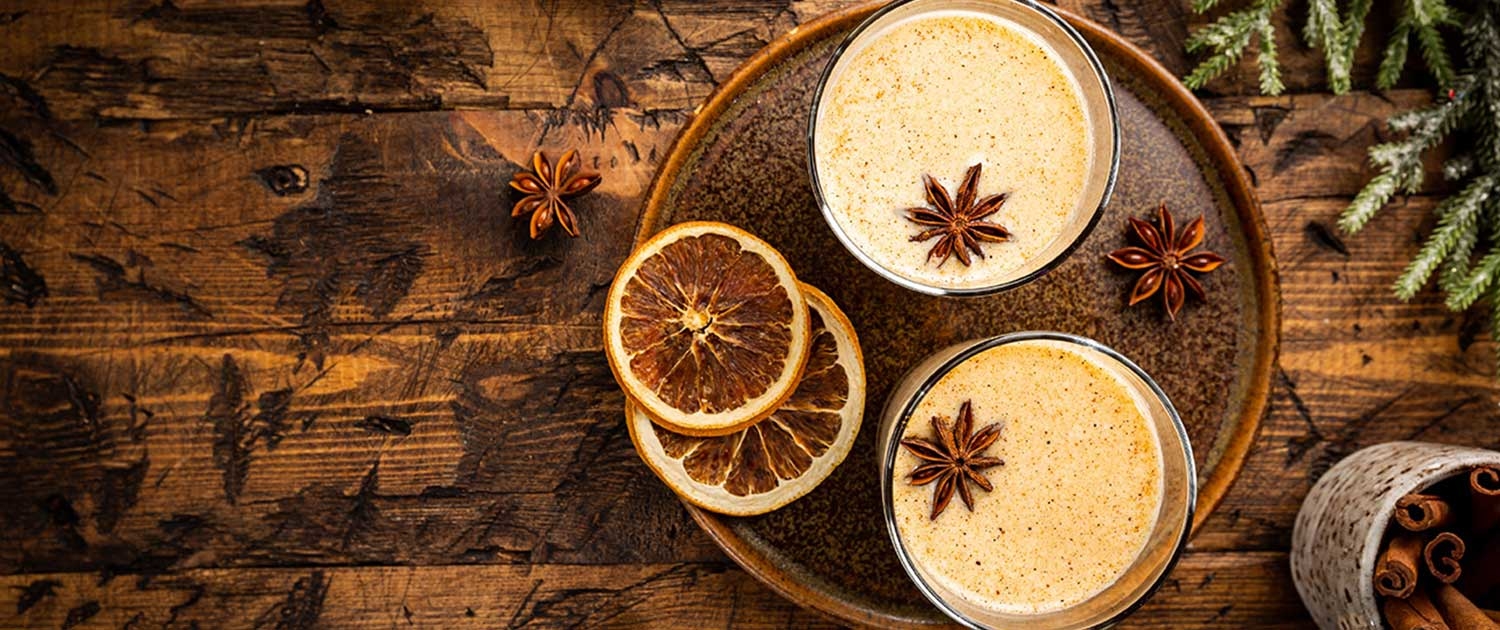Christmas Traditions
Each country has vibrant Christmas traditions, and as a land of immigrants, America has imported some of the best from foreign lands. Let’s look at some favorites and see where they came from.
Mexico’s Christmas Flower
The poinsettia is named for Joel Roberts Poinsett, our first ambassador to Mexico. He was taken with the beautiful flower and helped popularize it in America. Though Poinsett introduced the poinsettia, its popularity here and across the world is the result of its strong roots in Latin American culture and Christmas traditions.
Mexicans call it “Flor de Nochebuena,” or “Christmas Eve Flower.” That’s certainly more poetic than the Aztec name, which meant “flower that grows in residues or soil.” The Aztecs used it as a medication. Mexican legend says the first poinsettias grew from weeds a poor girl had placed at a church altar as a Christmas gift, and Franciscans in Mexico have displayed them in churches since at least the 1600’s. Christians everywhere have adopted it as a Christmas symbol because it’s star shape represents the Star of Bethlehem and the blood red color represents Christ’s crucifixion.
Santa Was an Immigrant Who Assimilated
As we mentioned in our tour of Christmas traditions last year, Santa Claus was originally a Dutch import named Sinter Klaas. But even after he arrived here, much of our Santa lore was created or inspired by immigrants.
When native-born Clement C. Moore wrote “A Visit from St. Nicholas” (better known as “’Twas the Night Before Christmas”) he based his Santa on a Dutch handyman he knew. The poem introduced the idea of a sleigh, eight named reindeer, and Santa using the chimney.
Our visual concept of Santa came from Thomas Nast, a German immigrant who became one of America’s most famous and influential political cartoonists. Except for his smoking pipe, Nast’s depiction, with red suit, white beard, rosy cheeks, and sack of toys, would fit into any Christmas story today.
German Immigrants Bring Their Best Traditions
Nast wasn’t the only German to create the modern American Christmas. Germans first arrived in the Jamestown colony as craftsmen in 1608, and waves of Germans settlers immigrated between 1680 and 1760, and then throughout the 19th Century. They brought some of their best Christmas traditions with them. Christmas Trees are a tradition that grew out of pagan practices, but gained new popularity in Germany during the Reformation. Martin Luther is said to have been the first to decorate a tree with candles, but the first Christmas tree we can point to with certainty was displayed in Strasbourg Cathedral in 1539. Lutheran immigrants brought the practice with them, and today almost 80% of American households put up a tree.
Many American trees display a single pickle ornament, sometimes hidden deep in the boughs. This stems from a German tradition of setting aside an extra gift from Saint Nicholas to give to the sharp-eyed child who found the pickle.
Candy canes were also a German invention. Some accounts say they were created as a reward for choirboys who remained quiet during Christmas services. They were introduced to America in 1847 by August Imgard, a German-Swedish immigrant. Today about 1.76 billion candy canes are produced in the U.S. annually.
The idea of decorating gingerbread came from Queen Elizabeth I of England, who asked that some gingerbread cookies be made that would resemble members of her court. But gingerbread houses were a German invention first seen in the 16th Century. They came to America with other German traditions, and grew in popularity with Americans of all ethnicities.
Raise a Glass of Curdled Milk to Santa
Egg nog started out as posset, an English drink combining curdled milk with wine or ale. English settlers in America perfected it, added egg and spices, and were the first to include rum. It was one of George Washington’s personal favorites.
Your kids might leave some egg nog out for Santa with a plate of cookies. If they do, they’re holding to a Norse tradition. During Yule, children would leave food for the god Odin and his eight-legged horse Slepnir. Viking records do not say if eight-legged horses enjoy chocolate chip cookies.
Season’s Greetings from SWITS
Our traditions tour is done, but no matter what holidays you celebrate or how you celebrate them, we wish you the best in this joyous season!
Christmas Traditions
Each country has vibrant Christmas traditions, and as a land of immigrants, America has imported some of the best from foreign lands. Let’s look at some favorites and see where they came from.
Mexico’s Christmas Flower
The poinsettia is named for Joel Roberts Poinsett, our first ambassador to Mexico. He was taken with the beautiful flower and helped popularize it in America. Though Poinsett introduced the poinsettia, its popularity here and across the world is the result of its strong roots in Latin American culture and Christmas traditions.
Mexicans call it “Flor de Nochebuena,” or “Christmas Eve Flower.” That’s certainly more poetic than the Aztec name, which meant “flower that grows in residues or soil.” The Aztecs used it as a medication. Mexican legend says the first poinsettias grew from weeds a poor girl had placed at a church altar as a Christmas gift, and Franciscans in Mexico have displayed them in churches since at least the 1600’s. Christians everywhere have adopted it as a Christmas symbol because it’s star shape represents the Star of Bethlehem and the blood red color represents Christ’s crucifixion.
Santa Was an Immigrant Who Assimilated
As we mentioned in our tour of Christmas traditions last year, Santa Claus was originally a Dutch import named Sinter Klaas. But even after he arrived here, much of our Santa lore was created or inspired by immigrants.
When native-born Clement C. Moore wrote “A Visit from St. Nicholas” (better known as “’Twas the Night Before Christmas”) he based his Santa on a Dutch handyman he knew. The poem introduced the idea of a sleigh, eight named reindeer, and Santa using the chimney.
Our visual concept of Santa came from Thomas Nast, a German immigrant who became one of America’s most famous and influential political cartoonists. Except for his smoking pipe, Nast’s depiction, with red suit, white beard, rosy cheeks, and sack of toys, would fit into any Christmas story today.
German Immigrants Bring Their Best Traditions
Nast wasn’t the only German to create the modern American Christmas. Germans first arrived in the Jamestown colony as craftsmen in 1608, and waves of Germans settlers immigrated between 1680 and 1760, and then throughout the 19th Century. They brought some of their best Christmas traditions with them. Christmas Trees are a tradition that grew out of pagan practices, but gained new popularity in Germany during the Reformation. Martin Luther is said to have been the first to decorate a tree with candles, but the first Christmas tree we can point to with certainty was displayed in Strasbourg Cathedral in 1539. Lutheran immigrants brought the practice with them, and today almost 80% of American households put up a tree.
Many American trees display a single pickle ornament, sometimes hidden deep in the boughs. This stems from a German tradition of setting aside an extra gift from Saint Nicholas to give to the sharp-eyed child who found the pickle.
Candy canes were also a German invention. Some accounts say they were created as a reward for choirboys who remained quiet during Christmas services. They were introduced to America in 1847 by August Imgard, a German-Swedish immigrant. Today about 1.76 billion candy canes are produced in the U.S. annually.
The idea of decorating gingerbread came from Queen Elizabeth I of England, who asked that some gingerbread cookies be made that would resemble members of her court. But gingerbread houses were a German invention first seen in the 16th Century. They came to America with other German traditions, and grew in popularity with Americans of all ethnicities.
Raise a Glass of Curdled Milk to Santa
Egg nog started out as posset, an English drink combining curdled milk with wine or ale. English settlers in America perfected it, added egg and spices, and were the first to include rum. It was one of George Washington’s personal favorites.
Your kids might leave some egg nog out for Santa with a plate of cookies. If they do, they’re holding to a Norse tradition. During Yule, children would leave food for the god Odin and his eight-legged horse Slepnir. Viking records do not say if eight-legged horses enjoy chocolate chip cookies.
Season’s Greetings from SWITS
Our traditions tour is done, but no matter what holidays you celebrate or how you celebrate them, we wish you the best in this joyous season!





